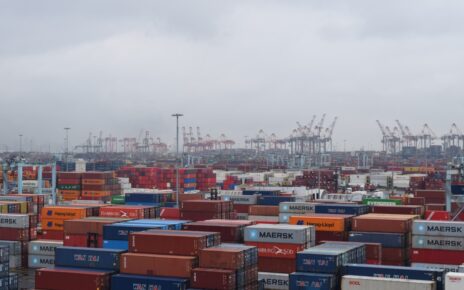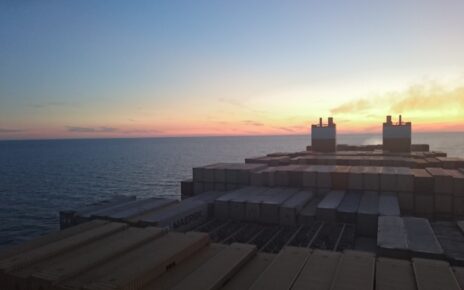The US Merchant Marine is a vital part of the nation’s economy and security, transporting goods and people across the world’s oceans and waterways. The US Merchant Marine consists of privately-owned ships that fly the US flag and are registered in the US, as well as the US mariners who crew them. The US Merchant Marine also supports the US Navy and other military branches in times of war or national emergency, providing sealift capacity and logistics support.
In this blog post, we will explore some of the major shipping routes and key ports of operation for the US Merchant Marine, as well as some of the challenges and opportunities facing this industry in the 21st century.
US Merchant Marine Shipping Routes
The US Merchant Marine operates on various shipping routes that connect different regions of the world. Some of the key transoceanic routes are:
– The North Atlantic route, which connects ports in the US East Coast, Canada, and the Caribbean with ports in Europe, especially in the UK, France, Germany, and the Netherlands. This route is one of the busiest and most competitive in the world, carrying a large volume of containerized cargo, as well as bulk commodities such as oil, coal, grain, and iron ore. According to UNCTAD, this route accounted for 13.4% of global maritime trade volume in 2019.
– The Mediterranean-Black Sea route, which connects ports in the US East Coast and Gulf Coast with ports in the Mediterranean Sea and the Black Sea. This route carries a variety of cargo, including agricultural products, chemicals, machinery, vehicles, and consumer goods. It also serves as a gateway to markets in North Africa and the Middle East. According to UNCTAD, this route accounted for 8.3% of global maritime trade volume in 2019.
– The Transpacific route, which connects ports in the US West Coast with ports in Asia, especially in China, Japan, South Korea, and Taiwan. This route is the largest and fastest growing in the world, driven by the increasing trade between the US and Asia. It carries mainly containerized cargo, as well as bulk commodities such as oil, coal, liquefied natural gas (LNG), and soybeans. According to UNCTAD, this route accounted for 23.7% of global maritime trade volume in 2019.
– The Panama Canal route, which connects ports in the US East Coast and Gulf Coast with ports in Asia via the Panama Canal. This route offers a shorter and cheaper alternative to sailing around South America for ships that can fit through the canal’s locks. It carries mainly containerized cargo, as well as bulk commodities such as oil, LNG, grain, and iron ore. According to UNCTAD, this route accounted for 3.5% of global maritime trade volume in 2019.
– The Suez Canal route, which connects ports in the US East Coast and Gulf Coast with ports in Asia via the Suez Canal. This route offers another option for ships that cannot fit through the Panama Canal or want to avoid its congestion and fees. It carries mainly containerized cargo, as well as bulk commodities such as oil, LNG, grain, and iron ore. According to UNCTAD, this route accounted for 8% of global maritime trade volume in 2019.
Key Ports of Operation of US Merchant Marine
The US Merchant Marine operates from various ports across the country that serve as hubs for loading and unloading cargo, as well as providing services such as ship repair, maintenance, fueling, and inspection. Some of the key ports of operation for the US Merchant Marine are:
– The Port of Los Angeles-Long Beach, which is the largest port complex in the US and one of the busiest in the world. It handles about 40% of all containerized imports and 25% of all exports that enter or leave the US. It serves as a major gateway for trade with Asia on the Transpacific route. In 2020, it handled over 9 million TEUs (twenty-foot equivalent units), a 1.5% increase from 2019. It also handled over 100 million tons of cargo value at $276 billion.
– The Port of New York-New Jersey, which is the second-largest port complex in the US and one of the busiest on the East Coast. It handles about 15% of all containerized imports and 11% of all exports that enter or leave the US. It serves as a major gateway for trade with Europe on the North Atlantic route. In 2020, it handled over 7 million TEUs (twenty-foot equivalent units), a 1.5% increase from 2019. It also handled over 87 million tons of cargo value at $204 billion.
– The Port of Houston, which is the largest port in the US by tonnage and one of the busiest on the Gulf Coast. It handles about 13% of all containerized imports and 22% of all exports that enter or leave the US. It serves as a major hub for trade with Latin America and the Caribbean on the Panama Canal route. In 2020, it handled over 3 million TEUs (twenty-foot equivalent units), a 1% increase from 2019. It also handled over 248 million tons of cargo value at $159 billion.
– The Port of Savannah, which is the fourth-largest port in the US by TEU volume and one of the fastest-growing on the East Coast. It handles about 8% of all containerized imports and 10% of all exports that enter or leave the US. It serves as a major hub for trade with Asia and Europe on the Suez Canal route. In 2020, it handled over 4.6 million TEUs (twenty-foot equivalent units), a 1.8% increase from 2019. It also handled over 38 million tons of cargo value at $84 billion.
– The Port of Seattle-Tacoma, which is the fifth-largest port in the US by TEU volume and one of the busiest on the West Coast. It handles about 9% of all containerized imports and 6% of all exports that enter or leave
the US. It serves as a major gateway for trade with Asia on the Transpacific route. In 2020, it handled over 3.9 million TEUs (twenty-foot equivalent units), a 14.7% increase from 2019. It also handled over 28 million tons of cargo value at $77 billion.



